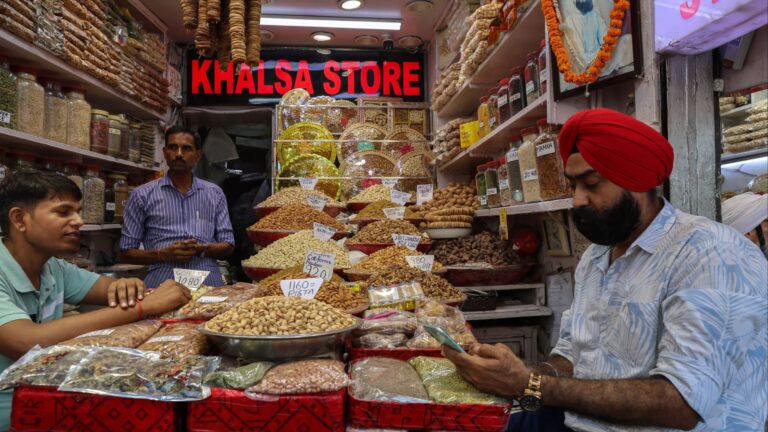The sources of sugar, coffee, tea, oil and other imports potentially subject to tariffs might surprise you.
By Tim Carman
Updated
June 3, 2025 at 2:11 p.m. EDT16 minutes ago
More than four months into Donald Trump’s second term as president, many Americans have been struck by a malaise, unknown to earlier generations, known as tariff fatigue. Its symptoms include a dizzying inability to keep up with the constantly changing costs of goods and how they might affect consumer pocketbooks.
Since his inauguration on Jan. 20, Trump has announced new or revised tariff policies more than 50 times, based on an accounting maintained by The Washington Post. Some tariffs were rolled back within a day. Some, such as the 145 percent tariff on Chinese imports, have been reduced because ofpolitical and economic pressures.
For a hot minute, most of the tariffs were halted after the little-known Court of International Trade ruled that they were illegal, a decision that was temporarily paused Thursday by the U.S. Court of Appeals for the Federal Circuit. Trump’s “Liberation Day” tariffs: Now you see them, now you don’t. Now you see them again — but for how long?
Story continues below advertisement
Advertisement
The head-spinning, ever-changing landscape has left many Americans wondering how the tariffs will affect their ability to purchase not just dolls and pencils, but also the kinds of products that wake us up in the morning, season our foods or satisfy our sweet tooth after a long day on the job. The Post reviewed import data for eight common ingredients — those found in cookies, candy bars, salad dressings, cereals and hot beverages — to see which countries send us the most of each item. We then compared the top country in each category against the current trade tariffs, whether the universal 10 percent tariff that applies to all countries or the steeper ones applied to China, to see how imports could be affected.
How much do you know about the sources of American imports? Test your knowledge with the following quiz. Some of the answers may surprise you as much as they did us.
1 of 8
America starts its morning with coffee, most every cup steeped with caffeine, the nation’s most popular psychoactive drug. Last year, the United States imported billions of dollars worth of coffee, including roasted and unroasted — or green — beans. Which country exported the most?
2 of 8
The United States is the second-largest importer of tea in the world, behind Pakistan, according to the Tea Association of the U.S.A. Last year, the U.S. imported more than 270 million pounds, including black and green tea, based on data compiled by the association from U.S. government sources. Which country sent us the most?
3 of 8
Some of the U.S.’s most popular salad dressings — Hidden Valley Ranch, Ken’s Creamy French, Kraft Thousand Island — are made with oil processed from soybeans, one of the country’s biggest cash crops. But the U.S. also imports hundreds of thousands of metric tons of soybean oil. Where does most of it come from?
4 of 8
Sugar is what makes your morning cereal irresistible, whether you prefer Cinnamon Toast Crunch or Cap’n Crunch, and that’s just one way that Americans satisfy their collective sweet tooth. The U.S. produces about 75 percent of the sugar it consumes annually. But it also imports millions of metric tons, both raw and refined. What country sent us the most last year?
5 of 8
Palm oil can be found in countless items at the supermarket, but the ingredient has increasingly become a staple in commercial baking, in part because the oil is cheap and can increase the shelf life of a product. You’ll even find it in Girl Scout cookies. What country sells the U.S. the most?
6 of 8
Simply put, the U.S. doesn’t produce enough fruit to keep up with the country’s thirst for orange juice, whether freshly squeezed or frozen concentrate. Every year, hundreds of millions of gallons of OJ are imported into the U.S. to supplement the juice processed mostly from Florida oranges. Which country supplied the most in 2024?
7 of 8
When you pop a Hershey’s Kiss or a few M&M’s, odds are good the chocolate originates from cocoa beans grown in West Africa, the world’s leading producer. While major U.S. candy manufacturers generally make their own chocolate, some may do so with cocoa butter and liquor processed in other countries. Some companies may even rely on bulk chocolate produced abroad. Which country sends the most of these products?
8 of 8
Salt is a flavor enhancer. Without it, most food would be lifeless — not exactly unfit for human consumption, but certainly unpalatable. Millions of tons are produced in the U.S., employing a variety of methods, including solar evaporation. But a lot is imported. Which nation shipped the most in 2024?
correction
A previous version of this story incorrectly stated that Brazil sent nearly 1.3 metric tons of raw and refined sugar to the U.S. in 2024. The correct amount is nearly 1.3 million metric tons.





